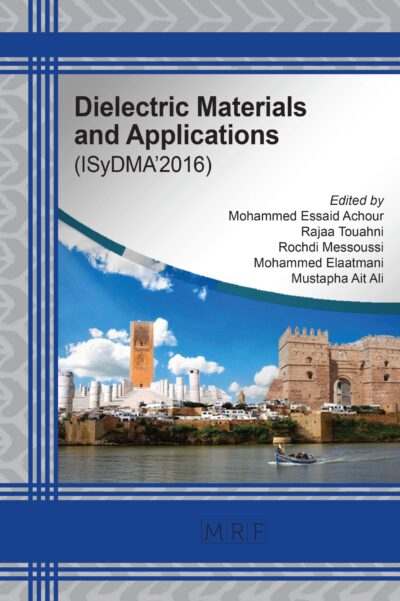Characterization and modelling of grain growth in Zr-Nb alloys: Niobium concentration influence
HAHN Pauline, GAILLAC Alexis, FLIPON Baptiste, BIGNON Madeleine, BOZZOLO Nathalie, BERNACKI Marc
download PDFAbstract. Zr-Nb alloys are mainly used in the nuclear energy industry. A study was carried out with the aim of understanding the physical phenomena involved during the hot extrusion stage and modeling these phenomena with numerical simulations. However, it is first essential to determine the material parameters, including reduced mobility during pure grain growth. Experimental and numerical campaigns are therefore carried out to define this parameter, material and model dependent. Consequently, this study focuses exclusively on the influence of niobium content on the grain growth kinetics of Zr-Nb alloy.
Keywords
Zr-Nb Alloys, Grain Growth, Solute Drag, Numerical Simulation
Published online 4/24/2024, 8 pages
Copyright © 2024 by the author(s)
Published under license by Materials Research Forum LLC., Millersville PA, USA
Citation: HAHN Pauline, GAILLAC Alexis, FLIPON Baptiste, BIGNON Madeleine, BOZZOLO Nathalie, BERNACKI Marc, Characterization and modelling of grain growth in Zr-Nb alloys: Niobium concentration influence, Materials Research Proceedings, Vol. 41, pp 715-722, 2024
DOI: https://doi.org/10.21741/9781644903131-79
The article was published as article 79 of the book Material Forming
![]() Content from this work may be used under the terms of the Creative Commons Attribution 3.0 license. Any further distribution of this work must maintain attribution to the author(s) and the title of the work, journal citation and DOI.
Content from this work may be used under the terms of the Creative Commons Attribution 3.0 license. Any further distribution of this work must maintain attribution to the author(s) and the title of the work, journal citation and DOI.
References
[1] D. O. Northwood, The development and applications of zirconium alloys, Materials & Design, 6 (1985) 58–70. https://doi-org /10.1016/0261-3069(85)90165-7
[2] H. Yang, J. Shen, and Y. Matsukawa, Effects of alloying elements (Sn, Nb, Cr and Mo) on the microstructure and mechanical properties of zirconium alloys, Journal of Nuclear Science and Technology, 52 (2015) 1162–1173. https://doi.org/10.1080/00223131.2014.996622
[3] A. Gaillac, Mise en forme des alliages de zirconium et de hafnium, Techniques de l’Ingénieur, M3190(V1) (2018). https://doi.org/10.51257/a-v1-m3190
[4] J. Humphreys, G. S. Rohrer, and A. Rollett, Recrystallization and Related Annealing
Phenomena, Materials Science and Engineering, Elsevier, third edition, 2017.
[5] C. S. Smith, Introduction to grains, phases, and interfaces – an interpretation of microstructure, Transaction metallurgy Society of AIME, 175 (1948) 15–51.
[6] C. Zener, Theory of growth of spherical precipitates from solid solution, Journal of Applied Physics, 20 (1949) 950–953.
[7] M. Bernacki, R. E. Logé, and T. Coupez, Level set framework for the finite-element modelling of recrystallization and grain growth in polycrystalline materials, Scripta Materialia, 64 (2011) 525–528. https://doi.org/10.1016/j.scriptamat.2010.11.032
[8] H. Tian, X. Wang, W. Gong, J. Zhou, and H. Zhang, Recrystallization behavior of cold-rolled Zr–1Nb alloy, Journal of Nuclear Materials, 456 (2015) 321–328. https://doi.org/10.1016/j.jnucmat.2014.09.084
[9] J. E. Burke and D. Turnbull, Recrystallization and grain growth, Progress in Metal Physics, 3 (1952) 220–292. https://doi.org/10.1016/0502-8205(52)90009-9
[10] M. P. Zahler, S. M. Kraschewski, H. Störmer, D. Gerthsen, M. Bäurer, and W. Rheinheimer, Grain growth and segregation in Fe-doped SrTiO3: Experimental evidence for solute drag, Journal of the European Ceramic Society, 43 (2023) 1613–1624. https://doi.org/10.1016/j.jeurceramsoc.2022.11.074
[11] B. Flipon, V. Grand, B. Murgas, A. Gaillac, A. Nicolaÿ, N. Bozzolo, and M. Bernacki, Grain size characterization in metallic alloys using different microscopy and post-processing techniques, Materials Characterization, 174 (2021) 1–14. https://doi.org/10.1016/j.matchar.2021.110977
[12] J. Schindelin, I. Arganda-Carreras, E. Frise, V. Kaynig, M. Longair, T. Pietzsch, S. Preibisch, C. Rueden, S. Saalfeld, B. Schmid, J.-Y. Tinevez, D. James White, V. Hartenstein, K. Eliceiri, P. Tomancak, and A. Cardona, Fiji: an open-source platform for biological-image analysis, Nature Methods, 9 (2012) 676–682. https://doi.org/10.1038/nmeth.2019
[13] Transvalor, DIGIMU Software, Read on https://www.transvalor.com/en/digimu the 10 December 2023.
[14] J. W. C. Dunlop, Y. J. M. Bréchet, L. Legras, and H. S. Zurob, Modelling isothermal and non-isothermal recrystallisation kinetics: Application to Zircaloy-4, Journal of Nuclear Materials, 366 (2007) 178–186. https://doi.org/10.1016/j.jnucmat.2006.12.074
[15] J. W. Cahn, The impurity-drag effect in grain boundary motion, Acta Metallurgica, 10 (1962) 789–798. https://doi.org/10.1002/9781118788295.ch16
[16] K. Lücke and H. P. Stüwe, Recovery and Recrystallization of Metals, Interscience by L. Himmel edition, 1963.
[17] K. Lücke and H. P. Stüwe, On the theory of impurity controlled grain boundary motion, Acta Metallurgica, 19 (1971) 1087–1099. https://doi.org/10.1016/0001-6160(71)90041-1
[18] J. Furstoss, C. Petit, A. Tommasi, C. Ganino, D. Muñoz, M. Bernacki, On the role of solute drag in reconciling laboratory and natural constraints on olivine grain growth kinetics, Geophysical Journal International, 224 (2021) 1360–1370. https://doi.org/10.1093/gji/ggaa520














